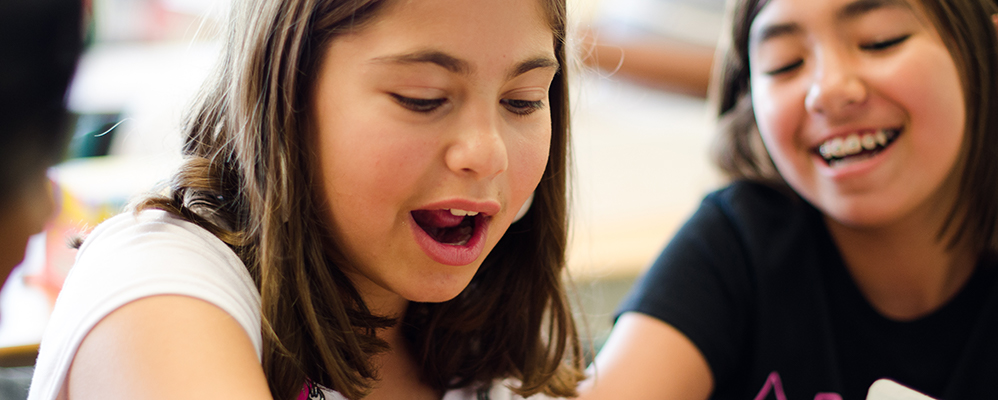Language Learning


What do students learn from language learning?
Learning Story
As students engage in language learning, they learn to express their feelings and opinions, and they develop greater understanding of the many purposes for which language is used. This type of play-based learning enables students to appreciate language as a medium for communicating ideas and information and as a source of enjoyment.
The acquisition of complex language is what most distinctly separates humans from other animals. It is thanks to language that we can pass on stories and traditions, express how we feel and share our thoughts. Research shows that from birth onward, the amount and quality of language which children hear influences their ability to use words and express their ideas and ultimately has an impact on their achievement in school.
Students learn best when they are not just recipients of knowledge but co-creators and when they actively engage in the process of critical thinking. A quiet classroom does not allow an educator insight into student learning and thinking. However, an active, social classroom where students share their thoughts and build on each other’s ideas gives the educator an entry point into student thinking and an opportunity to scaffold the learning.
It is for these reasons that educators plan literature circles in which students are invited to share their knowledge and thoughts about books.
This year, two of our grade five classes included some students who were reluctant to participate fully in their classrooms’ literature circles. We felt they needed extra support, and a setting that was less stressful for them. These students could typically read books with little difficulty but seemed unwilling to express their thoughts and feelings about them.
We invited these students to meet once a week for a lunch-and-book-chat. I emphasized that the sessions were not mandatory or evaluative but instead were intended simply to be fun. To that end, I made sure a special treat was always on offer. The students were shown a number of contemporary novels and could choose the one they wished to read. We negotiated the choices so that at least four students would be reading the same book.
The students in this special book club participated more actively in group discussions and demonstrated deeper understanding of the issues in the stories than had previously been indicated. Some needed extra probing to discuss the ideas and others needed some help connecting their thinking but all had interesting points to contribute. Participation in smaller, more intimate groupings allowed the students to build their confidence and feel safe in expressing their thoughts. Many noted pleasure in being able to choose their book, which added to their motivation to read and reflect.
I found it advantageous for me to work with a smaller group of students as well. Since I was not evaluating the students, I could participate in the discussions as a member of the club and prompt the students to explore their thoughts further. I was able to bring out questions and ideas they had but were reluctant to share.
The book club was a play activity given it was loosely structured to meet the requirements of the group, attendance was by choice and it was a lot of fun. Everyone enjoyed the discussions and I believe that my participation modelled and encouraged deeper participation. Since the students felt safer in this group, they expressed their viewpoints more freely, made interesting and sometimes unconventional connections to the text and demonstrated more complex language than in the larger group. As soon as I observed that the students were able to run their book club on their own, I withdrew my support and let them progress independently.



